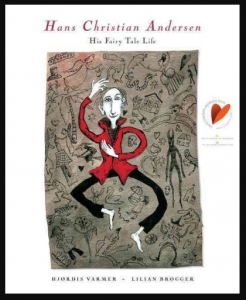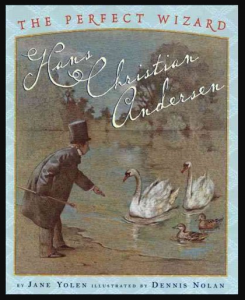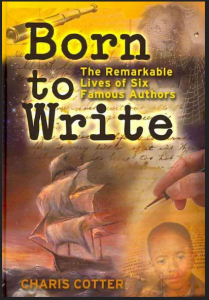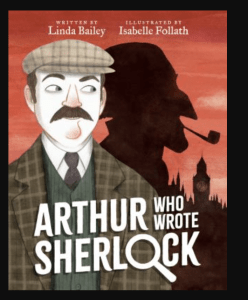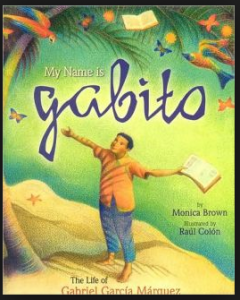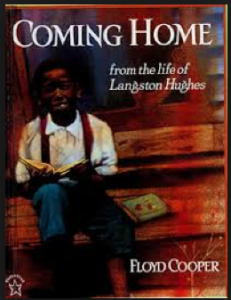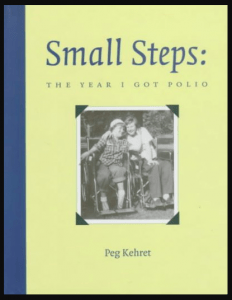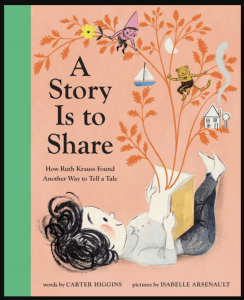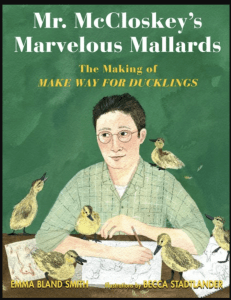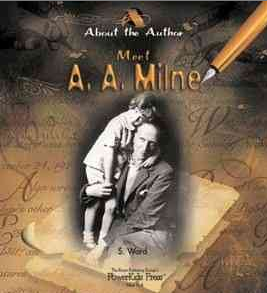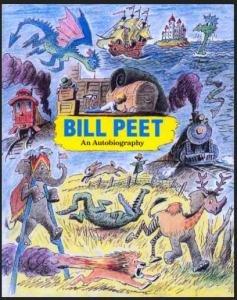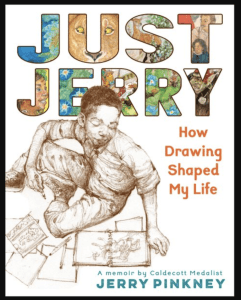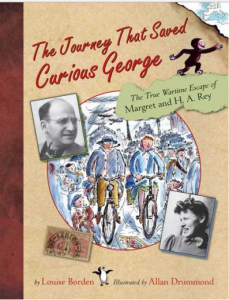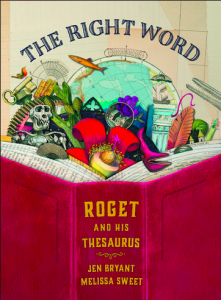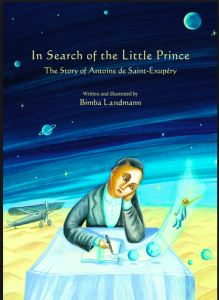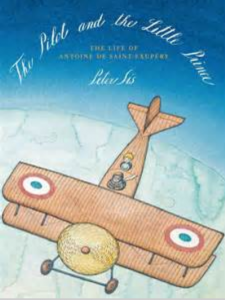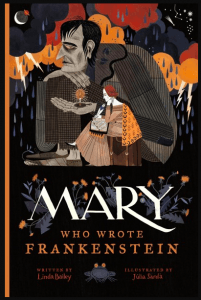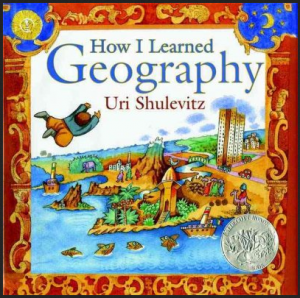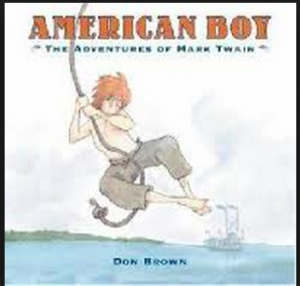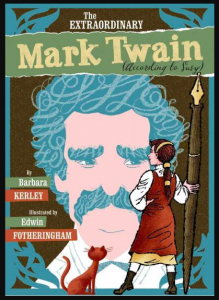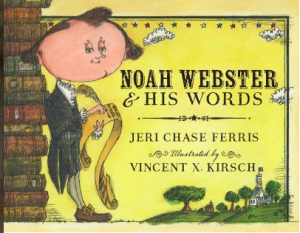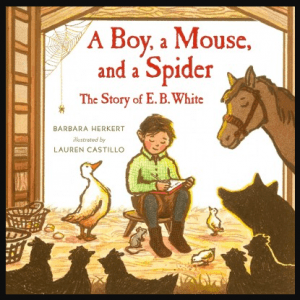Varmer, Hjordis. Hans Christian Andersen: His Fairy Tale Life. Toronto: Groundwood Books, 2005.
An 11-chapter 111-page biography of the famous writer of fairy tales. Elegantly written by a renowned Danish children’s book author and beautifully illustrated by an award-winning artist, this book is highly recommended for inquisitive readers 10 years old and up. Translated from Danish.
Yolen, Jane. The Perfect Wizard: Hans Christian Andersen. New York: Dutton’s Children’s Books, 2004.
Quotations from Andersen’s fairy tales and full-page illustrations by Dennis Nolan accompany this lovely picture book biography highly recommended for readers 7 to 14 years of age.
Hopkinson, Deborah. Ordinary, Extraordinary Jane Austen. New York: Balzer & Bray an imprint of HarperCollinsPublishers, 2018.
“Nothing ever fatigues me but doing what I do not like.”
“The real evils, indeed, of Emma’s situation were the power of having rather too much her own way, and a disposition to think a little too well of herself.”
“For what do we live, but to make sport for our neighbors, and laugh at them in our turn.”
“It is a truth universally acknowledged, that a single man in possession of a good fortune, must be in want of a wife.”
Jane Austen was born in England over two hundred years ago. But her novels still entertain people all around the world. This biography tells the story of how she grew up to become a famous writer. The detailed ink and watercolour illustrations by Qin Leng, the style and size of the text, and the layout of the pages all combine to create a delightful picture book highly recommended for curious readers 9 to 15 years old.
Conrad, Vicki. Just Like Beverly. Seattle, Washington: Little Bigfoot, an imprint of Sasquatch Books, 2019.
Runaway Ralph. Ramona the Pest. Henry and Ribsy. Most readers know these characters so well that they almost seem like real people in our memories. But who was their creator? Who was Beverly Cleary? A little farm girl who didn’t like reading and wasn’t good at it until her second grade teacher kindly helped her learn. Then her mother gave her a book with characters who were funny and had adventures, who reminded her of her own life, and she finally discovered the joy of reading. But how did she become a writer? This picture book biography – appended with six pages of additional information and a timeline – is cheerfully recommended for everyone who has enjoyed Cleary’s wonderful classics of children’s literature.
Born to write : the Remarkable Lives of Six Famous Authors by Chris Cotter (Toronto: Annick Press, 2008).
Six authors are profiled in this collection recommended for readers 11-years-old and up. Lucy Maud Montgomery, C.S. Lewis, E.B. White, Madeleine L’Engle, Philip Pullman and Christopher Paul Curtis. Shorter profiles are provided for these authors: Hans Christian Andersen, Edith Nesbit, Louisa May Alcott.
Enormous Smallness: a Story of e.e. cummings by Matthew Burgess (Enchanted Lion Books, 2015).
Bailey, Linda. Arthur Who Wrote Sherlock. Toronto: Tundra, 2022.
Everyone knows the famous detective Sherlock Holmes. But who is Arthur Conan Doyle? A quiet man who lives alone and stays indoors writing stories? No. Definitely not. Arthur Doyle loves sports – all sports – and is a superb storyteller. When he completes his schooling, he travels the world as a ship’s medical officer before coming back to Scotland to open his own practice. While he waits for patients to arrive, he writes stories, all of which are rejected by publishers. No one wants them. Until he writes about a detective, and Sherlock Holmes is born! (Arthur also marries twice, has five children, does more travelling, and does all he can to make sure people are not mistreated.) This biography – written in present tense – is a delight to read! It flows beautifully: perfect for reading aloud to younger students, excellent for teaching style to older students. And the liveliness of the writing and the humour of the illustrations (by Isabelle Follath) make it fun for any age. Outstanding!
My name is Gabito: the life of Gabriel García Márquez by Monica Brown (Flagstaff, Ariz.: Luna Rising, 2007).An award-winning picture book, in English and Spanish, portraying the Columbian childhood of the world-famous writer. Includes an afterword with more details about the writer’s life. Recommended for ages 7 and up. Useful as a read-aloud for middle school literature and writing classes.
Coming Home: From the Life of Langston Hughes by Floyd Cooper (New York: Philomel, 1994).
Animals Welcome: A Lifetime of Reading, Writing, and Rescue by Peg Kehret (New York: Dutton Children’s Books, 2012).
Small Steps: The Year I Got Polio by Peg Kehret (Morton Grove, Ill.: Albert Whitman, 1996).
Higgins, Carter. A Story Is to Share: How Ruth Krauss Found Another Way to Tell a Tale. New York: Abrams Books for Young Readers, 2022.
How do you tell a story with a violin? How do you tell a story with paint? How do you tell a story with words when your ideas scatter all over and tumble away? Ruth Krauss, award-winning author of more than forty children’s books, grew up to find a way. This playful picture book, whimsically illustrated by Isabelle Arsenault and accompanied by two pages of background information, is cheerfully recommended for readers 6 to 10 years old. It’s also recommended for writers who are curious about how small changes can affect the tone of a story: Nowhere in this book is Ruth’s name mentioned; not once; instead, the author always refers to her to as ‘the girl’ or ‘she’. How does that affect a reader’s connection to the story?
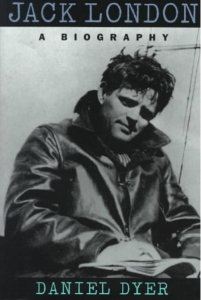
Jack London: A Biography by Daniel Dyer (New York: Scholastic Press, 1997).
“Biography of the colorful American writer who had been an oyster pirate, a seal hunter, a mill worker, a hobo, and a political activist before becoming a popular author at the age of twenty-nine.” – CIP. This detailed biography of the rough life of the author of Call of the Wild and White Fang is recommended for mature readers 13-years-old and up.
Smith, Emma Bland. Mr. McCloskey’s Marvelous Mallards: The Making of Make Way for Ducklings. New York: Calkins Creek, an imprint of Astra Books for Young Readers, 2022.
How do you become a great writer? How do you become a great artist? By practising, of course. Practising and practising. Over and over and over. When Robert McCloskey, the famed author and illustrator, decided to create a picture book about a family of ducks, he started drawing sketches. But they weren’t very good. He did some research on ducks and tried again, but his sketches still weren’t very good. So he went out and bought a box of ducklings and took them home to live in his studio. You’d think living with ducklings, messy squawking ducklings, would help him know how to create great illustrations. But it wasn’t enough. So he went out and brought home a box of adult ducks. After Mr. McCloskey had practised and practised some more and the ducks really needed to get back outside where they belonged, he was finally satisfied with his pictures. It had taken him six years of researching and writing and drawing to finish his story. But it was worth it. In 1942, Make Way for Ducklings won the Caldecott Award for the most distinguished American children’s picture book! This biography by Smith, illustrated with gouache and coloured pencil drawings by Becca Stadtlander and appended by extensive background information, is highly recommended for students 6 to 10 years old and for anyone of any age who needs encouragement to not give up. Keep practising!
Meet A.A Milne by S. Ward (PowerKids Press, 2001).
Woodsong by Gary Paulsen (Aladdin Paperbacks, 2007, c1990).
Weeds in Bloom: Autobiography of an Ordinary Man by Robert Newton Peck (RandomHouse, 2005).
Bill Peet: An Autobiography by Bill Peet (Houghton Mifflin, 1989).
Pinkney, Jerry. Just Jerry: How Drawing Shaped My Life. New York: Little, Brown and Co., 2023.
Jerry Pinkney always loved drawing. He would lie on his bunk bed and draw pictures on the wall. He would lie under the piano in the living room of the small house where he lived and draw pictures in his sketchpad. He would ride his bicycle through the streets of Philadelphia and stop to draw more pictures. School was difficult, especially in the 1940s and 50s when few people recognized dyslexia. But when Jerry picked up a pencil and started to draw, he came alive. This memoir is a vivid account of Pinkney’s childhood and young adulthood. Right from the first page, the style of writing pulls a reader into the life of a boy growing up in a city where African Americans didn’t feel safe if they ventured beyond their neighbourhoods. It immerses readers in the life of a large loving family and shows how Pinkney was able to become one of the most famous children’s book illustrators in America. Highly recommended for readers 10 years old and up.
The Journey that Saved Curious George : the True Wartime Escape of Margret and H.A.Rey by Louise Borden and illustrated by Allan Drummond (Boston : Houghton Mifflin, 2005).
The Right Word: Roget and His Thesaurus by Jen Bryant (Grand Rapids MI: Eerdmans Books for Young Readers, 2014).
This 2015 Caldecott Honor Book tells the story of the Peter Mark Roget, the creator of the famous thesaurus first published in 1852. The creative illustrations will interest and inspire readers of all ages.
In Search of the Little Prince: the Story of Antoine de Saint-Exupery written and illustrated by Bimba Landmann (Grand Rapids, Michigan : Eerdmans Books for Young Readers, 2014).
A picture book biography that tells about the famous French author’s love of flying and his life at the beginning of the 20th century. More suitable for older readers who are interested to learn about the author of the famous classic story.
The Pilot and the Little Prince: The Life of Antoine de Saint-Exupery by Peter Sis (New York : Frances Foster Books – Farrar Straus Giroux, 2014)
A creatively illustrated and lyrically written picture book biography sure to be enjoyed be readers 8-years-old and up. Highly recommended.
Rumford, James. Sequoyah: The Cherokee Man Who Gave His People Writing. Boston: Houghton Mifflin Co., 2004.
Cherokee uses 84 symbols or signs to make all the sounds of the language. This writing system was invented by a man called Sequoyah who lived over 150 years ago. Full-page colour illustrations and a Cherokee translation by Anna Sixkiller Huckaby accompany this compelling true story told by award-winning James Rumford. Highly recommended for readers of all ages.
The Boy on Fairfield Street: How Ted Geisel Grew Up to Become Dr. Seuss by Kathleen Krull with paintings by Steve Johnson and Lou Fancher (New York: Random House, 2004). A heart-warming picture book biography with softly coloured full-page illustrations and small drawings by Dr. Seuss. The old-fashioned style of the paintings and the gentle rhythm of the words create a story that feels like a memory told by a grandparent. Additional information about Dr. Seuss’s adulthood is provided at the end of the book. Highly recommended for readers and listeners 8 years old and up. (Kathleen Krull has written many biographies, both picture books and chapter books, and they’re all a joy to read. Her flowing style of writing makes the informative content sound like someone talking to you, telling you about someone you might like to meet.)
Bailey, Linda. Mary, Who Wrote Frankenstein. New York : Tundra Books, an imprint of Penguin Random House Canada Young Readers, 2018.
You’ve no doubt heard of Frankenstein, the horrible monster created by a mad scientist. The real story is far more interesting. Fourteen-year-old Mary and her stepmother did not get along together. So her father sent her off to live in Scotland. When she came back, two years later, life was still difficult in their London home. So Mary ran away. She and her stepsister ran away with a poet, Percy Shelley, to Switzerland where they lived in a house on Lake Geneva. And one night, eighteen-year-old Mary came up with the idea of a monster brought to life by a Dr. Frankenstein. No one could believe that a girl had written such a horror story when it was first published in 1818. But she had written it. And 200 years later, her story is still famous! This dramatic picture book, suspensefully illustrated by Julia Sarda, tells Mary’s whole story. Read it the first chance you get!
How I Learned Geography by Uri Shulevitz (New York: Farrar Straus Giroux, 2008).
A picture book with an afterword that provides historical details about the author’s life including his childhood as a refugee.
American Boy: The Adventures of Mark Twain by Don Brown (Houghton Mifflin Co., 2003).
The Trouble Begins at 8: A Life of Mark Twain in the Wild, Wild West by Sid Fleischman (Greenwillow Books, 2008).
The Extraordinary Mark Twain (According to Susy) by Barbara Kerley (New York: Scholastic Press, 2010).
This is a frank biographer and an honest one; she uses no sandpaper on me.” That’s what Mark Twain said about his own daughter, who secretly – when she was thirteen years old – kept a journal about her adored papa. Author Barbara Kerley tells the whole story in this intriguing picture book biography. Varying-sized fonts, humorous full-page illustrations by Edwin Fotheringham, and sample journal entries complete with misspellings help to tell this delightful account of one of the most well-known American writers. A timeline, author’s note, and tips for writing a biography complete this picture book recommended for all who have enjoyed the tales of Tom Sawyer and Huckleberry Finn.
Noah Webster & His Words by Jeri Chase Ferris (Boston: Houghton Mifflin Harcourt, 2012).
A Boy, a Mouse, and a Spider: The Story of E.B. White by Barbara Heckert (New York: Christy Ottaviano Books / Henry Holt and Company, 2017).
Who was the author of the classic Charlotte’s Web? What was his childhood like? What challenges did he overcome? What inspired him to write children’s stories? The design of this picture book – illustrated by Caldecott winner Lauren Castillo – is unfortunately weakened by the font, which does not match the style of the pictures. Nevertheless, this biography is still recommended for curious readers 8 years old and up.
McDonough, Yona Zeldis. Little Author in the Big Woods. New York: Christy Ottaviano Books / Henry Holt and Company, 2014.
Little House on the Prairie is one of the first novels of childhood. The experiences of Laura’s family in the series of ‘Little House’ books have formed many people’s picture of frontier life. But who was Laura Ingalls Wilder?
This 157-page biography portrays the life of an energetic girl who grew up to be an enterprising writer, a woman who never lost her sense of adventure. The relatively large font and widely spaced lines will appeal to children being introduced to the Little House books for the first time. The glossary, several recipes, and directions for playing games and making toys at the end of the book will be useful for teachers designing units of study. The biography itself, though, will also be appreciated by older readers who fondly remember Laura’s stories of her childhood in 19th century America.
